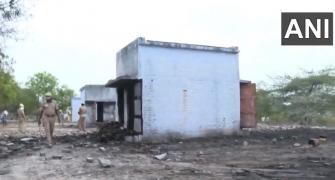India is planning to develop a laser-based weapon system as part of its Ballistic Missile Defence to intercept and destroy missiles soon after they are launched towards the country.
"If you have a laser based system on an airborne or seaborne platform, it can travel at the speed of light and in a few seconds, we can kill a ballistic missile coming towards us," DRDO's Air Defence Programme Director V K Saraswat told PTI in New Delhi.
He said the laser-based interceptor will give 'more time' to the BMD system to kill a ballistic missile launched from a distance of 2000 km.
"Suppose if the missile is being launched at Indian target from 2000 km. If I have to kill it there, I will have to travel that distance, which will require many minutes to be there. If you have a laser system travelling at a speed of light, it can kill that missile in its boost phase (just after launch) even before it has travelled a few 100 km," Saraswat, who is Chief Controller R&D, said.
A ballistic missile take-off has three segments. When launched, it is called boost phase, and followed by the mid course when it reaches the highest point of its trajectory and lastly the terminal phase when it is coming close to the target on ground.
Saraswat said its ideal to destroy a ballistic missile carrying nuclear or conventional warhead in its boost phase.
"It's easier to kill a missile in boost phase as it has not gained much speed and is easier to target. It cannot deploy any countermeasures and it is vulnerable at that time," Saraswat said.
The distinguished scientist stated that DRDO laboratories like The Laser and Science Technology Centre (LASTEC) was also developing such technologies.
"In LASTEC, we are developing many of these technologies. We have to package these technologies on aircraft like the Americans have done on their systems," he added.
Saraswat added that it will take another 10-15 years for the premier defence research institute to make it usable on ground.
"It is an involved process and not just about producing lasers. We have to put in many systems like the surveillance and tracking systems together for such a system to work. It will take another 10-15 years before we talk of integrating all these elements," he said.






